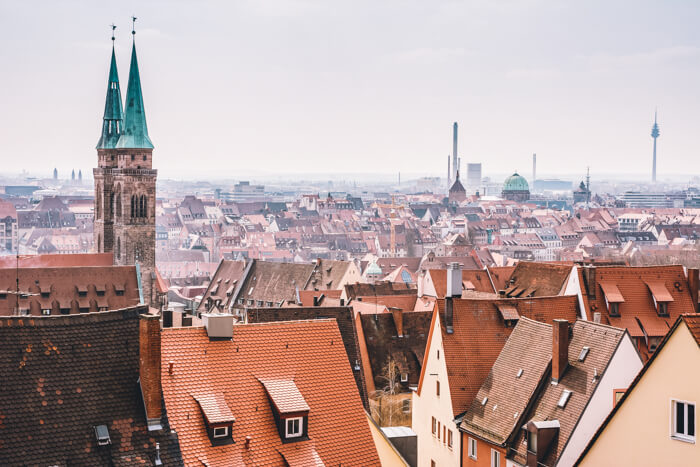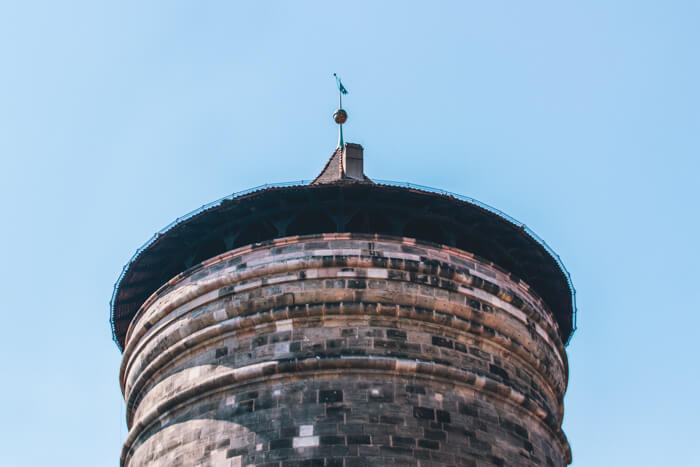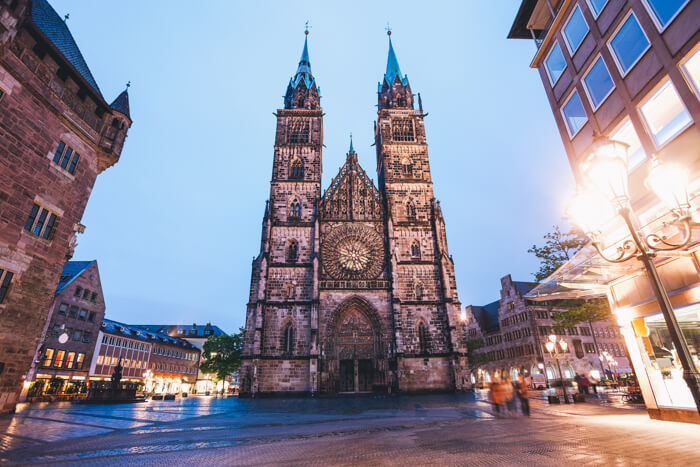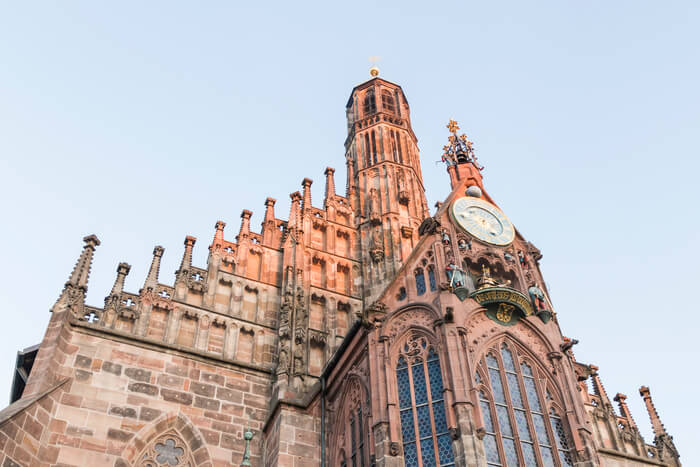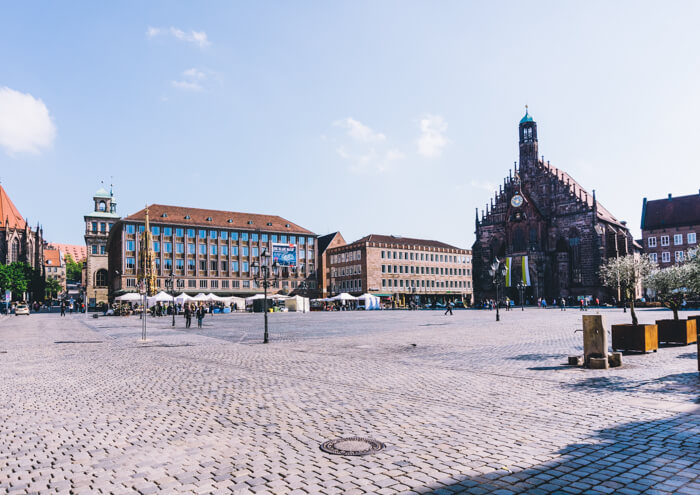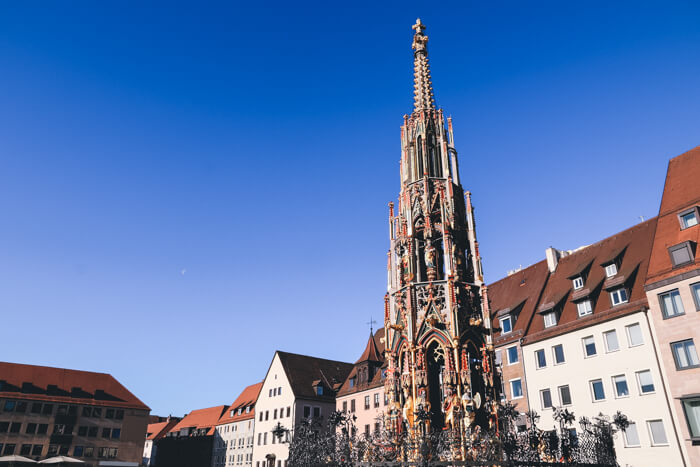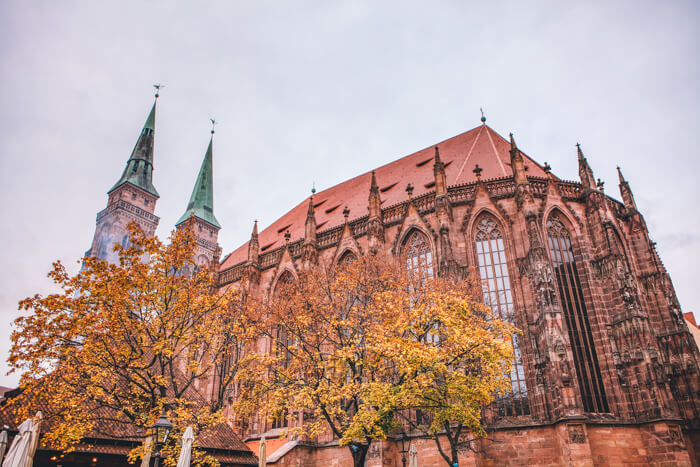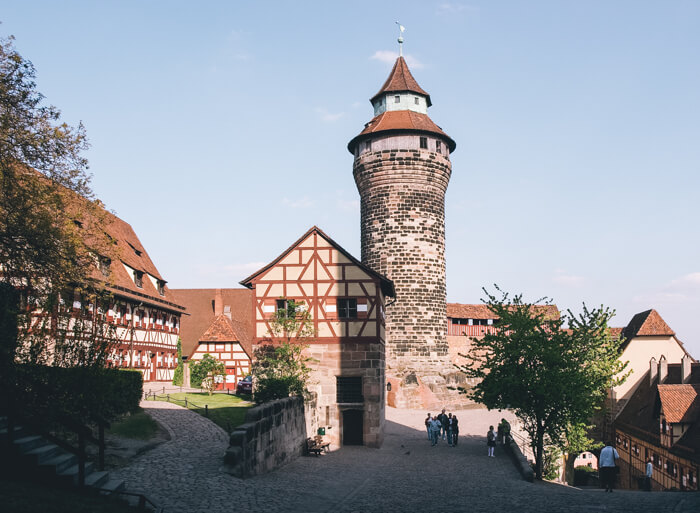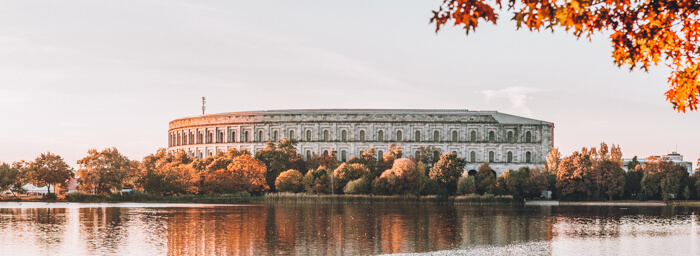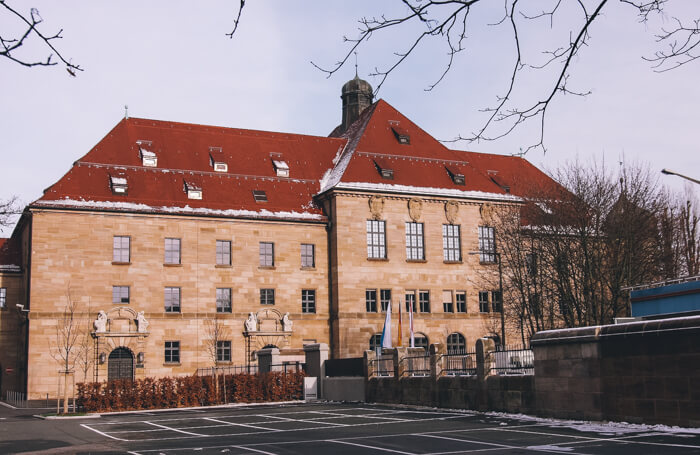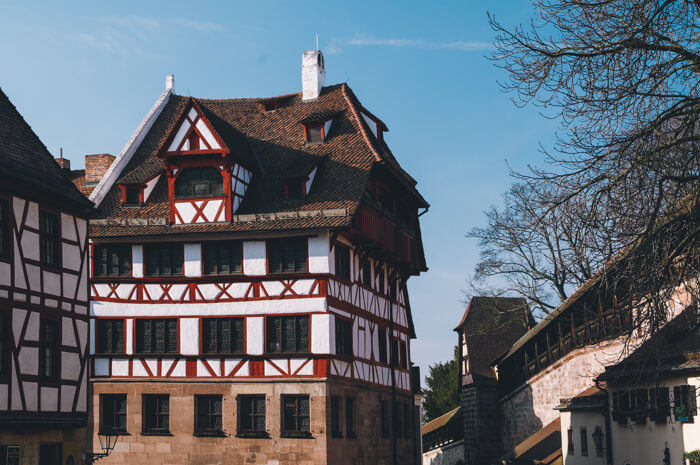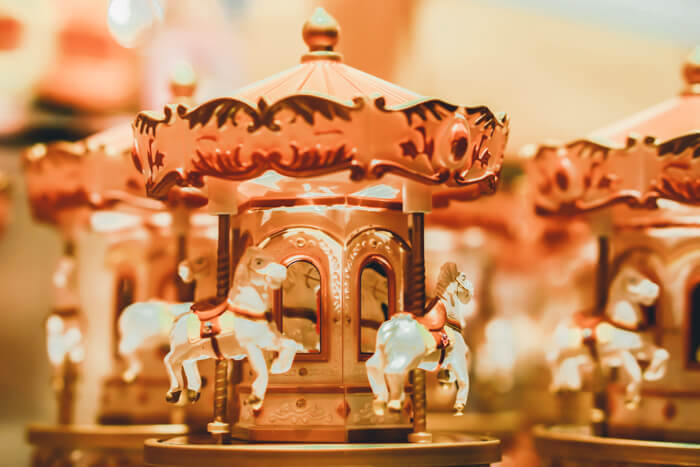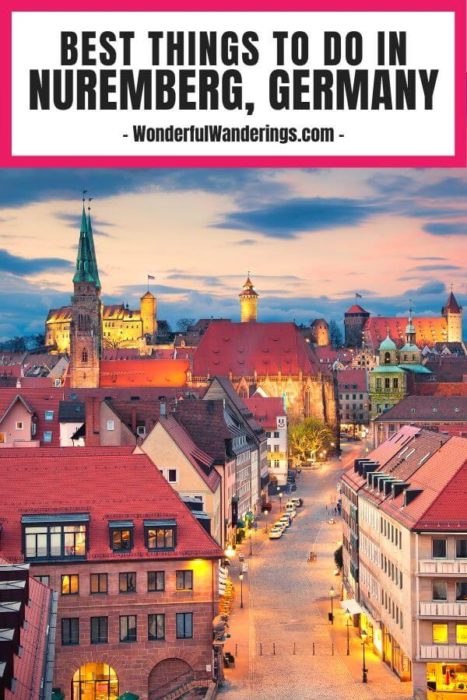I met Kai, a Nuremberg local, at an event in Berlin and when he heard about Wonderful Wanderings, he immediately suggested writing an article about Nuremberg things to do. I said yes and thus came to be this list of things to do in Nuremberg.
Enjoy!
And if you plan on visiting lots of museums, the Nuremberg Card is worth checking out. It’s valid for two days, gives you free admission to a bunch of sights, and includes free use of public transportation in Nuremberg and Fürth.
Contents
Fun Nuremberg things to do
So is Nuremberg worth visiting? After living in the capital of Franconia for a year, the short answer is yes! But, it does depend on the goals of your travels. Nuremberg is a very picturesque city, especially in the Altstadt (the old town) and is rich in history and culture.
However, if you are hoping to retail shop or enjoy the nightlife, then there are better alternative cities in Germany like Berlin and Hamburg. Nonetheless, this itinerary of activities and tourist attractions in Nuremberg is constructed with sightseeing, food, and accessibility as its main objectives.
From Nuremberg Castle to the toy museum, here are some of the best things to see in Nuremberg.
1. The Frauentorturm
We start the day at the entrance of the Altstadt, by the Frauentorturm located adjacent to the Hauptbahnhof (main station). The Frauentorturm (“Women’s Tower”) is one of four medieval defense towers located within the fortified city walls.
Unfortunately, there are no official documents that reveal when exactly these historic defense towers were built, but experts suggest it was sometime in the 14th century. Now, it is considered as one of the hallmarks of the area.
2. Café in der 12
As we walk along the cobblestone road, you’ll encounter a number of shops, cafes, and hotels that are maintained to provide a quaint and charming old town feel. I consider the old town to be the heart and soul of Nuremberg, Germany.
I highly recommend making a pit stop at the cozy Café in der 12 for a cup of coffee or cappuccino. If it is summer, take a seat at the outdoor patio and soak in the surrounding atmosphere of the city.
3. Lorenzkirche
Afterwards, we will walk towards the Lorenzkirche (St. Lorenz Church/ St Lawrence Church), dating back to the 13th century. This medieval and gothic style church is one of the three most iconic churches in Nuremberg.
Its construction began around the year 1250 and was severely damaged during the Second World War. If you want to view the inside, you can find the hours of operation below.
The organ of this historic Nuremberg church has over 12000 pipes, making it one of the largest organs in the world.
4. Frauenkirche
Next, we will walk across the sandstone bridge over the Pegnitz River and towards the Frauenkirche (Church of Our Lady). The Frauenkirche is the first gothic church in the region of Franconia. It also houses a unique feature at noon called the Männleinlaufen, which is a famous mechanical clock that sings to commemorate the Golden Bull of 1356.
The Golden Bull of 1356 was a decree that became an important constitutional element for the Holy Roman Empire.
The building itself is a hall church with some interesting architectural features and sculptures. Inside, it is home to many important works of art from the Middle Ages.
Its exterior is adorned with a number of coats of arms, including that of the Holy Roman Empire, the city of Nuremberg, the city of Rome (where the Holy Roman Emperors were crowned), and the Seven Electors.
5. Nürnberger Hauptmarkt
As we step outside the church, we will see the Nürnberger Hauptmarkt, which is a public square in Nuremberg’s old town that features local vendors of produce, meat, baked goods, and gifts. If your accommodation has a kitchen, then it may be a good opportunity to do some grocery shopping at this market!
During the winter season, the square is also home to the Christkindlesmarkt, which is the largest Christmas market in Germany that serves various flavors of glühwein (mulled wine) and lebkuchen (gingerbread cookies) to over two million visitors.
6. Schöner Brunnen
Before we make our way to lunch, don’t forget to turn the golden ring of the Schöner Brunnen. This is a fountain from the Middle Ages that is 19 meters / 62 feet high, featuring 40 figurines. There are two brass rings on the fence around the fountain. Legend says if the golden ring is turned once, then three wishes will be fulfilled. Hopefully one of those wishes is lunch :-)
6. Bratwurst Röslein
For lunch, I encourage you to visit the Bratwurst Röslein for some traditional Bavarian cuisine. The restaurant is beside the Frauenkirche in the old town. Some of my recommendations are the Nuremberger Bratwurst (Nuremberg sausage), Schweinebraten (roast pork) or Käsespätzle (German mac n cheese). Yum!
If you are a beer drinker, then don’t forget to order a Helles (Southern German pale lager). If beer is not your thing, then try the Apfelschorle (mix of apple juice and carbonated water).
7. Sebalduskirche
Roughly 200 meters away from Bratwurst Röslein is Sebalduskirche, the third of the three most iconic churches in Nuremberg, found on Albrecht Dürer Square (Albrecht-Dürer-Platz). The church began its existence in 1225 and was named after St Sebaldus, the patron saint of Nuremberg. You can see his tomb in the chancel.
8. Bürgermeistergarte
We then walk a slight uphill towards the Bürgermeistergarten (Mayor’s Garden). The park got its name because it used to be rented out to the mayor of the city of Nuremberg. After 1975, the park was opened to the public and since then it has become a gem filled with tranquillity, greenery, and the chirping sounds of birds.
It’s an ideal place if you want to get away from the crowds of people and noise. Bring a book; take a seat on one of the benches and soak in some me time. Below is a link for the hours of operation of the park.
9. Kaiserburg (Nuremberg Castle)
Beside the Bürgermeistergarten is the Kaiserburg Nürnberg (Nuremberg Castle). The imperial castle can be considered as a symbol of the city with rumors spreading during the Holy Roman Empire of its figure representing power and status in Germany. Visiting the castle is one of the most popular and best things to do in Nuremberg.
Enjoy walking between high castle walls and gates as the top presents us with a treat! If possible, I highly recommend a visit to Nuremberg Castle at sunset. To get the best view, head up Sinwell Tower, one of the few parts of the castle to withstand World War II, to see all across the old town and beyond. You can also visit the Imperial Castle Museum.
10. Dinner at O.sha
As the end of the day approaches, if you are looking for a dinner option in the old town and are not on a budget, I highly recommend O.sha (Thai restaurant). Yes, you may have a desire to indulge your German palate again, but for those that are looking for some variety, their O-sha style Pad Thai is mouth-wateringly good! If you don’t feel like sitting in, grab a döner kebab to go.
Fun fact, did you know that the döner kebab was invented in Germany?
Nightlife in Nuremberg
If, after all the walking, you still have it in you to experience the nightlife, then I recommend having a drink at either Blok or Harlem Bar. Both bars are located in the Altstadt and about 200 meters away from each other.
Blok on Fridays has a live DJ event on its small, but intimate dance floor. So, if you feel like dancing to some groovy tunes, then this may be your jam! Harlem Bar is a bit more lavish. They don’t have a dance floor but do have comfortable couches.
More things to do in Nuremberg
Nuremberg Documentation Centre Nazi Party Rally Grounds
Let’s start with exploring the Dokumentationszentrum Reichsparteitagsgelände (Nuremberg Documentation Centre Nazi Party Rally Grounds). This museum can be considered as the birthplace of the Nazi party regime and was the location of mass meetings for the Reich Party.
As we walk through the area, visit the museum, and see the roads where the Nazi parades would have marched, we will get a better visual understanding of the influence of the National Socialist Regime through the colossal buildings and use of space.
The colosseum-shaped building in the middle of the Nazi Party Rally Grounds is the Congress Hall. After WWII, vestiges of the Nazi Party like this were left unfinished rather than destroyed, in order to remind us of the horrors of the regime. The Congress Hall is now home to the Nuremberg Documentation Center museum.
Inside the museum, one of the best permanent exhibitions is called “Fascination and Terror”, which takes you on a journey to the past. By the end of the Fascination and Terror exhibition, you’ll come away with a much greater understanding of the causes, connections, and consequences of Nazi Germany.
The museum is probably one of the most interesting experiences of visiting Nuremberg, so allow plenty of time! If you want to get the most out of your visit, book a guided tour.
Palace of Justice
After the end of the Third Reich, the Nazi regime had to answer for their committed crimes. This historical event was called the Nuremberg Trials and it was held in Courtroom 600 at the Justizpalast Nuremberg (Palace of Justice). Today, there is a museum in part of the same building where the trials took place.
The location for the Nuremberg Trials was selected because Nuremberg can be considered as the birthplace of the Nazi regime. So, it seemed appropriate that the regime also end here. The Nuremberg Trials had an enormous influence on the development of international criminal law to this day, and the courtroom is presently still used for murder trials.
Inside the museum, you can find insights about the defendants and their crimes during the Second World War. You can also take tours around the museum with an expert guide on Wednesdays.
Visit the Germanisches Nationalmuseum
Holding over 1.2 million objects, from musical instruments to historical documents, to telescopes, the Germanisches Nationalmuseum is one of the largest of its kind, and a museum to celebrate the entirety of German culture.
The National Museum of Germany, Nuremberg, is also an interesting place to visit as it’s part of The Way of Human Rights – a monument to world peace all along one street.
Drop in on the Albrecht Dürer House
Albrecht Dürer was one of Nuremberg’s most important citizens. He was an important figure in the Northern Renaissance, and known for his prints and paintings. Albrecht Dürer lived in this house, not far from Nuremberg Castle, for the last 20 years of his life. Today, it’s a museum that you can visit.
Get nostalgic at the Nuremberg Toy Museum
Ever since the Middle Ages, Nuremberg has been famous for making toys. Of course, there’s a museum to celebrate! The toy museum is a trip down memory lane, presenting a mix of toys that span many eras. It’s a great light-weight museum for those who want to relive their childhood!
How to Get Around Nuremberg?
For those interested in exploring the city outside the Altstadt, then I recommend either using the local metro or bus. If you are riding the metro, don’t forget to buy a metro ticket from either the DB or VAG machine. It’s easy to forget because purchasing a ticket is not necessarily enforced, but if you are caught without one you can be slapped with a 60€ penalty.
If you are riding the bus, then you can purchase a ticket from the driver; the best part is the driver can give you change, so no need to have the exact amount.
If you want a bit more freedom then you can try one of the electric scooters that you may find scattered around the city. Voi and Tier recently began piloting these bad boys, and they are a ton of fun to ride. Don’t forget to download the app before use!
Lastly, Nuremberg also has a hop-on/hop-off bus that takes you along all the most important sites and includes a multi-lingual audio guide.
Where to Stay in Nuremberg?
For those not traveling on a budget, I highly recommend Hotel Victoria, which is located beside the Frauentorturm and a 300-meter walk from the Hauptbahnhof. The rooms are furnished with a traditional European and modern touch.
I stayed in a 3-bedroom flat when my mum and grandma were visiting from Japan. The room, including the bathroom, was spacious with wooden flooring and the beds provided a restful feeling, which I find can be rare in a hotel. It was not just a place to sleep, but a place to relax.
Also, the breakfast buffet selection was incredible. They cater to both international and local palates with their assortment of local fruits, salads, smoothies, juices, coffee, muesli, breads, spreads, cheeses and meats. Let’s just say after eating this breakfast, I was usually full until dinner
Why you should visit Nuremberg
As a foreigner, usually the most well-known and frequently visited city in Bavaria is München. The city has a large expat population and can be considered the financial hub for Germany. But, personally, this image has affected the city’s Bavarian culture and transformed it into another “popular” metropolis. In other words, the beauty of Nuremberg is that it has arguably become a hidden gem.
In addition, the city is very compact. Meaning, you can absorb the city’s rich history, culture, and cuisine (literally) in a day. The downtown area is manageable by foot and it harbors one of the most picturesque old towns in all of Germany.
If you are traveling on a tight schedule, then good news you can experience traditional Bavaria in a day. If you are traveling with an open schedule, then also good news experiencing traditional Bavaria only takes a day. What are you waiting for?
Don’t forget travel insurance
Plan for the best, prepare for the worst. Travel insurance has you covered in case (part of) your trip gets canceled, you get sick or hurt abroad, and sometimes even when your electronics break or get stolen. I always make sure I’m covered every trip I go on.
Don’t have travel insurance yet? Check out SafetyWing. They offer super flexible plans that you can even sign up for while you’re already on your trip. On top of that, they were the first travel insurance to cover COVID, and when I got COVID, they reimbursed all of my expenses without making a fuss. Their customer support team is great and I can personally recommend them.
PIN FOR LATER

